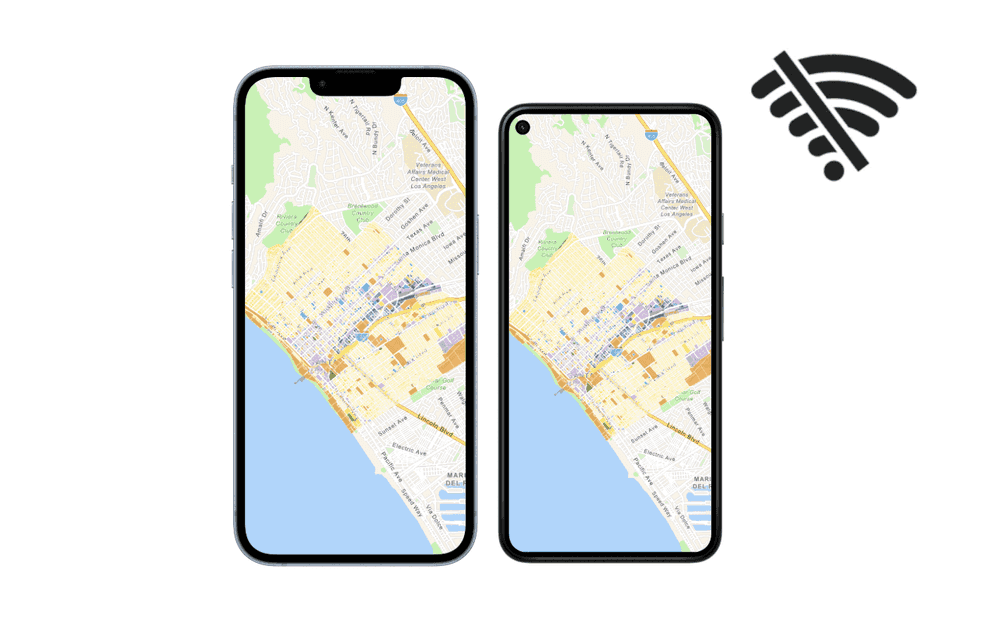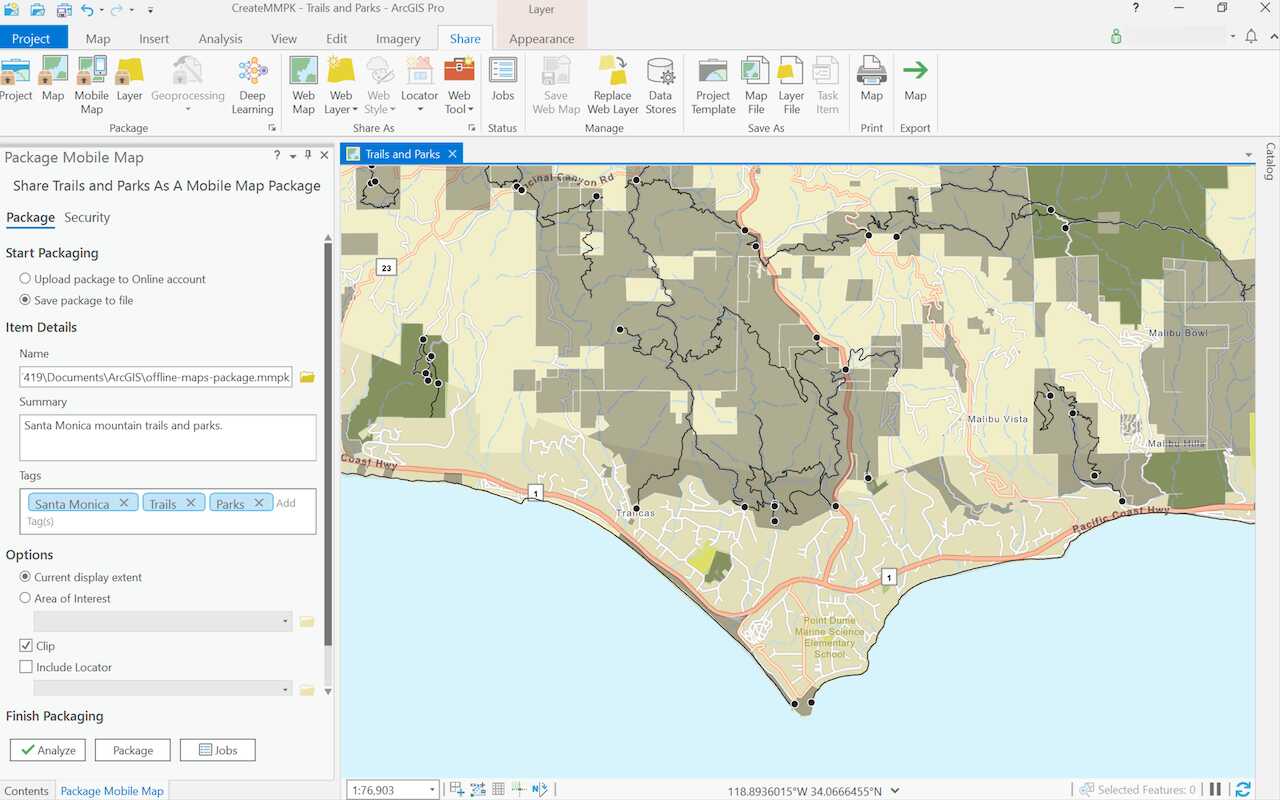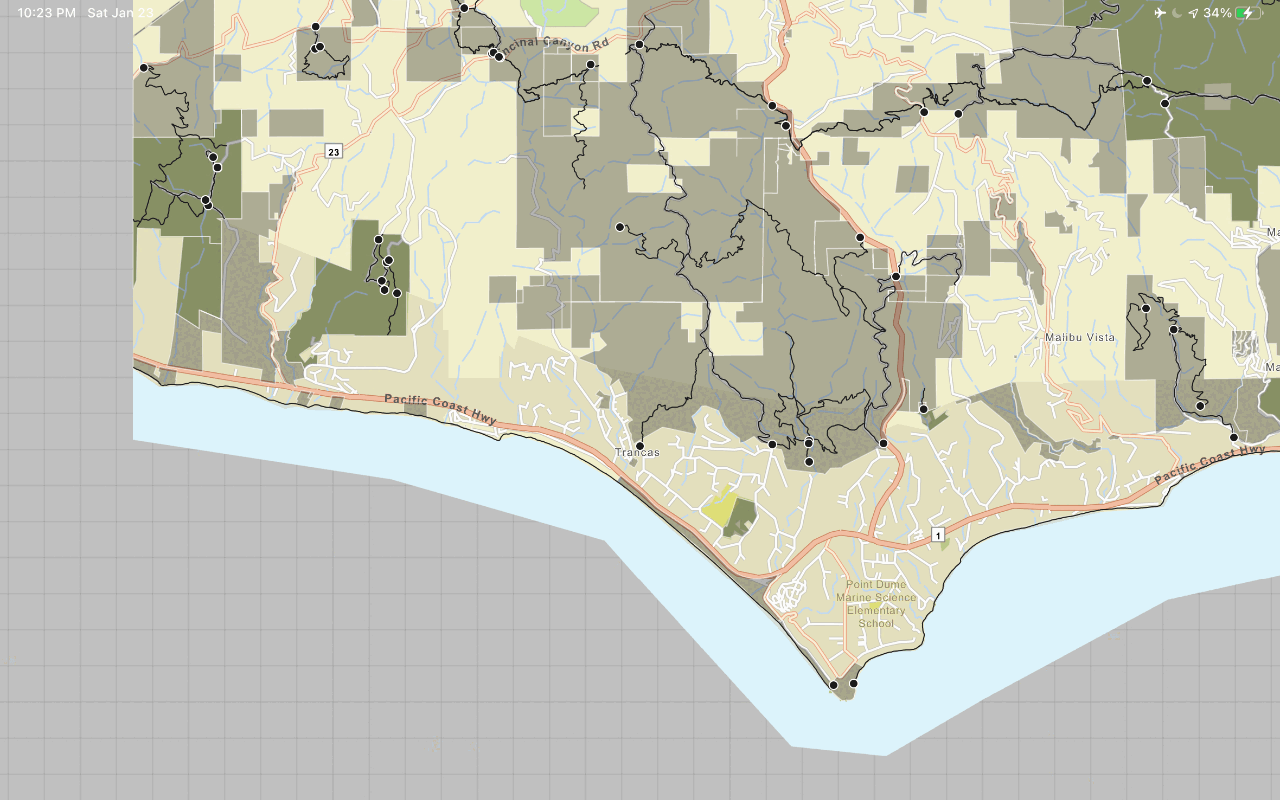
What is a fully offline app?
A fully offline app is a type of offline app that is designed to work where network connectivity is entirely absent. It is also used when you have a large amount of data and it is impractical to transfer the data over the network. While you can still make offline edits in your fully offline app, it is not possible to synchronize your offline edits nor pull down changes from the server without network connectivity.
When do you use fully offline apps?
You use fully offline apps when you have no network access at all. You can still perform basic mapping tasks offline as long as you have the map and data downloaded to your device. This includes searching for an address, making edits to offline data, performing routing, or using the device's GPU for viewshed, line-of-sight, and interactive distance measurement capabilities. However, you cannot download data from ArcGIS, such as offline-enabled web maps and feature services, or synchronize data. To update your data, you will need to repackage and sideload it onto the device.
Mobile data sources for fully offline apps
You can build a fully offline app using any of these mobile data sources:
- Mobile packages: A mobile package is an ArcGIS Pro project containing maps and/or scenes.
- Data files: A data file is a stand-alone file containing geographic data that can be displayed by a layer in a map or scene.
The following table compares the capabilities of different mobile data sources you can use in your fully offline app:
| Mobile packages | Data files | |
|---|---|---|
| 2D maps | 1 | |
| 3D scenes | 2 | |
| Edit data while offline | 3 | |
| Synchronize offline edits | 4 | |
| Fully disconnected apps/devices | ||
| Offline geocoding | 5 | |
| Offline routing | 6 | |
| Offline analysis | ||
| Set expiration date for data access |
- 1. Map constructed in code
- 2. Scene constructed in code
- 3. Shapefiles, GeoPackages, and KML
- 4. Custom sideloading workflows required
- 5. Locator exported from ArcGIS Pro
- 6. Network Analysis dataset exported from ArcGIS Pro


